Introduction to Hyperbaric Oxygen Therapy (HBOT)
Hyperbaric Oxygen Therapy for Neurological Conditions involves breathing pure oxygen in a pressurized chamber. This process significantly increases the amount of oxygen delivered to tissues, promoting healing, reducing inflammation, and stimulating the formation of new blood vessels. Over the years, HBOT has gained recognition for its therapeutic potential in various medical conditions, particularly in neurological disorders.
Hyperbaric History: Evolution of HBOT
17th Century Origins
The history of hyperbaric oxygen therapy dates back to the 17th century. In 1662, British physician Nathaniel Henshaw constructed the first known hyperbaric chamber, called the “Domicilium.” This primitive chamber was designed to alter atmospheric pressure, with the belief that different air pressures could treat respiratory and circulatory disorders. Though its medical benefits were not fully understood at the time, this invention laid the foundation for modern hyperbaric treatments.
Advancements in the 19th and 20th Centuries
Medical Applications
By the 19th century, hyperbaric chambers were being utilized in Europe for treating decompression sickness, a condition common among deep-sea divers. Additionally, in the early 20th century, HBOT was introduced as a treatment for carbon monoxide poisoning, demonstrating its effectiveness in oxygenating damaged tissues and removing toxic gases from the bloodstream.
Technological Progress
The 20th century saw significant advancements in hyperbaric technology. With the development of more sophisticated and controlled hyperbaric chambers, the therapy gained recognition in mainstream medicine. By the mid-20th century, research expanded into HBOT’s potential benefits for neurological conditions, particularly those involving oxygen deprivation and inflammation.

Hyperbaric Oxygen Therapy for Neurological Conditions
As research into HBOT expanded, it became evident that increased oxygenation could play a role in supporting neurological recovery.
Stroke Recovery
When a stroke occurs, the brain experiences a lack of oxygen due to restricted blood flow. HBOT enhances oxygen supply to ischemic (oxygen-starved) brain tissues, potentially reducing the extent of damage. Studies suggest that HBOT can aid neuroplasticity—the brain’s ability to reorganize and form new neural connections—leading to improved functional outcomes for stroke survivors.
Traumatic Brain Injury (TBI)
Traumatic Brain Injury (TBI) can result in long-term cognitive impairments due to inflammation and cell damage. Research indicates that HBOT can help reduce inflammation and promote healing by increasing oxygen delivery to affected areas. This has led to improvements in cognitive function, memory, and motor skills among TBI patients undergoing HBOT.
Cerebral Palsy
Cerebral Palsy (CP) is a neurological disorder caused by oxygen deprivation during birth or early development. Studies suggest that HBOT may improve motor function, reduce muscle spasticity, and enhance cognitive abilities in individuals with CP. While more research is needed, some parents and physicians report noticeable improvements in children undergoing HBOT.
Multiple Sclerosis (MS)
Multiple Sclerosis (MS) is an autoimmune disease affecting the central nervous system. Preliminary research suggests that HBOT may help alleviate some symptoms, such as fatigue and muscle weakness, and slow disease progression by reducing inflammation and promoting neural repair.
Post-Concussion Syndrome
Post-concussion syndrome (PCS) is a condition that can persist for months or years following a concussion. HBOT has been explored as a potential therapy to alleviate PCS symptoms, including headaches, dizziness, and cognitive impairment, by enhancing brain oxygenation and promoting tissue recovery.
Recent Innovations and Research in HBOT
Advancements in medical research continue to explore the full potential of HBOT in treating neurological conditions.
Neuroplasticity and Cognitive Enhancement
Findings: Recent studies have demonstrated that HBOT can stimulate neuroplasticity, the brain’s ability to reorganize itself by forming new neural connections. This is particularly beneficial for patients recovering from neurological damage due to injury, stroke, or degenerative diseases.

Post-COVID-19 Neurological Symptoms
Applications: As the long-term effects of COVID-19 continue to emerge, some patients report lingering neurological symptoms such as brain fog, memory issues, and cognitive decline. HBOT has been investigated as a treatment for post-COVID-19 neurological conditions, showing promising results in improving cognitive function and reducing inflammation in affected patients.
Safety Considerations and Contraindications
While HBOT is considered a safe treatment, it is not suitable for everyone. Some precautions should be taken to ensure patient safety.
General Safety
HBOT is generally well-tolerated, but potential risks include:
- Ear barotrauma: Pressure changes can affect the ears, similar to the sensation experienced during airplane travel.
- Oxygen toxicity: Prolonged exposure to high oxygen levels can lead to lung irritation or seizures, though this is rare.
Contraindications
Certain medical conditions may preclude individuals from receiving HBOT, including:
- Untreated pneumothorax (collapsed lung): The increased pressure in an HBOT chamber could worsen this condition.
- Respiratory infections or conditions like COPD: Patients with certain lung diseases may experience complications due to oxygen concentration changes.
- Uncontrolled high fever: Elevated body temperature can increase the risk of oxygen toxicity.
Conclusion
Hyperbaric Oxygen Therapy has evolved from its early experimental stages to a scientifically validated treatment for various neurological conditions. With its ability to enhance oxygenation, reduce inflammation, and stimulate healing, HBOT continues to show promise for individuals suffering from stroke, TBI, multiple sclerosis, and other neurological disorders. Ongoing research is further expanding its applications, offering new hope for improved recovery and quality of life.
If you or a loved one is seeking advanced, non-invasive therapy for neurological recovery, Lakeshore Hyperbaric Center in Chicago offers cutting-edge HBOT treatments tailored to your needs. Contact us today to schedule a consultation and explore how HBOT can support your healing journey!




